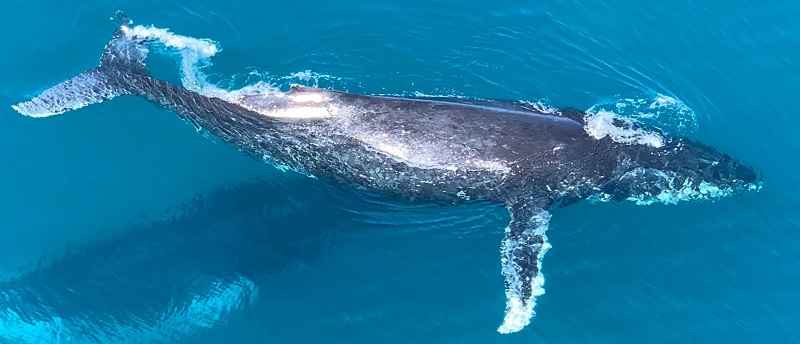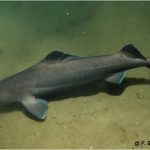← Back
A new tag to record diving behavior of large whales

A new tag dedicated to large whale has been developped and tested. It enables to record dive behaviors, using a software detection event to better summarize and compress the data to be used during long-range travels over several months.
As we saw in a previous testimonial, whales are long-range travelers, whose routes could be considered as an “essential ocean variable” (Identifying whale migration routes in the global oceans). One might even think that whales are the most tracked marine animals, and have been so for the longest time, since they are so big. In fact, however, large whales are difficult species to tag: you can’t capture them, keep them still or even less haul them onto a boat to affix a tag.
During the attachment operation time they can move great distances. Moreover, when equipped, they don’t surface for long, so signals from the tag must be short, thus limiting the quantity of information transmitted. Archival tags can circumvent part of these problems, but only for a limited period of time when collecting relatively large amounts of data, and with the recovery of the actual tag needed to retrieve all the data.
A new whale-dedicated tag
A new Argos tag dedicated to large whales was recently developed. It incorporates sensors for monitoring the movements and dive behavior of large whales over several months and across half the Earth’s ocean, without requiring recovery. It also includes software to summarize and compress the data to transmit them in real-time through Argos wherever the whale might be and this for several months in a row.
More info about animal tracking with Argos
Lunge feeding is a behavior with a stereotypical signature in accelerometer data, since the whale moves at high speed towards its prey to engulf a large quantity of water with prey, after which it filtrates the water within its closed mouth to actually capture the prey. This was the first time that accelerometers with event detection software to monitor lunge-feeding behavior were used on a satellite-transmitting tag for large whales.
This new tag was tested on seven blue (Balaenoptera musculus) and seven humpback (Megaptera novaeangliae) whales. The software was configured to detect dives and create per-dive summaries describing behavioral events associated with feeding activities. For validation, the resulting dive summaries were compared with medium-duration archival tag data from a deployment on a blue whale.
The results recorded diel and longer-term variability in diving and feeding behavior, some of which were previously hard or even impossible to observe. The results also showed differences for the same individual, and between different individuals tracked at the same time.
This new tag could also be used for other cetacean species, and broaden the possibility of satellite telemetry in terms of behavior, and should help in conservation policies.
Reference & links
- Palacios, D.M., Irvine, L.M., Lagerquist, B.A. et al. A satellite-linked tag for the long-term monitoring of diving behavior in large whales. Anim Biotelemetry 10, 26 (2022). https://doi.org/10.1186/s40317-022-00297-9
- Website: https://mmi.oregonstate.edu/whet/new-smart-tag-monitors-whale-behavior-satellite
- OSU Press Release
- https://twitter.com/danielequs/status/1577054386781495296
https://twitter.com/danielequs/status/1577053458972045312
https://twitter.com/danielequs/status/1577051729677283329
Main photo: Whale – Nadia Levenets for Unsplash



